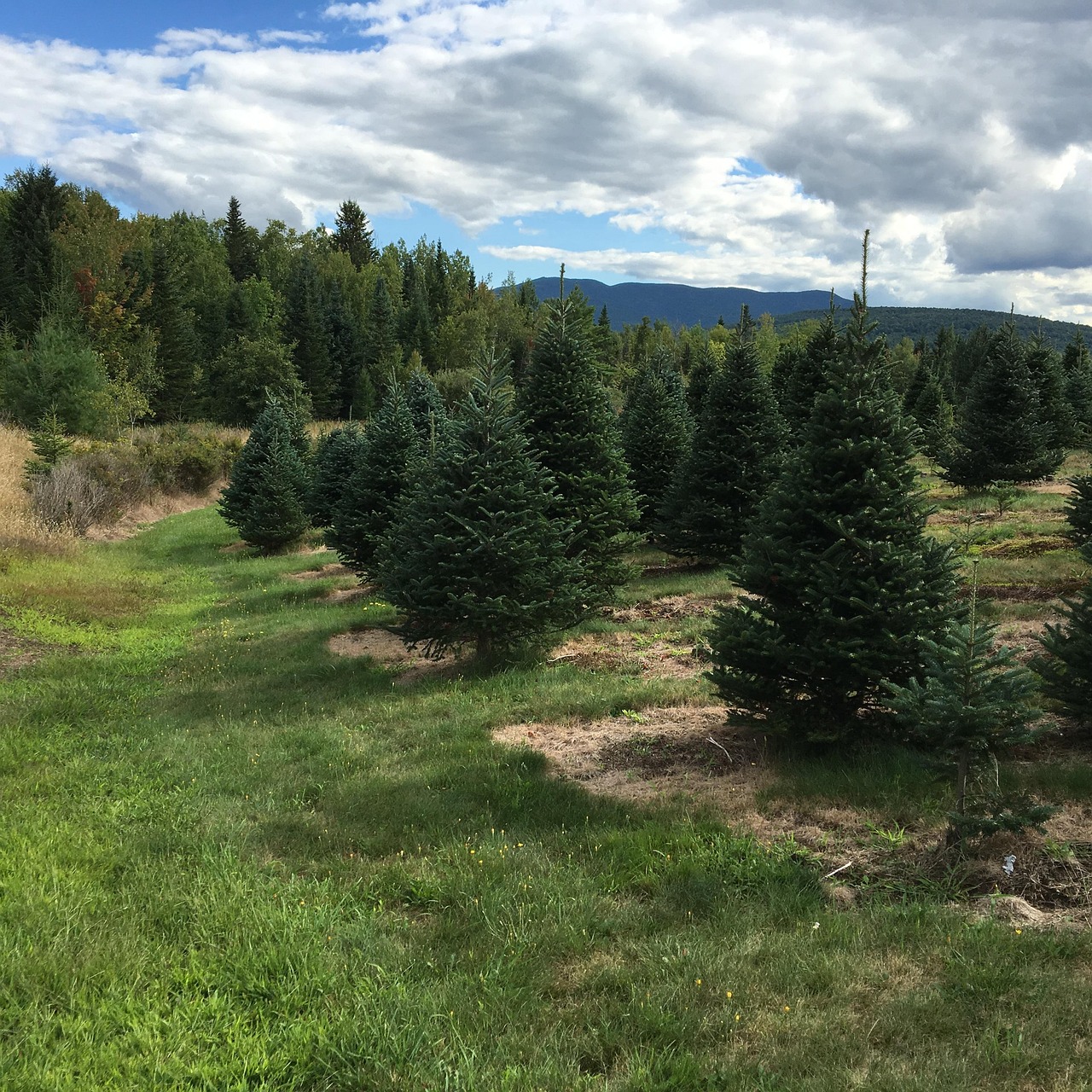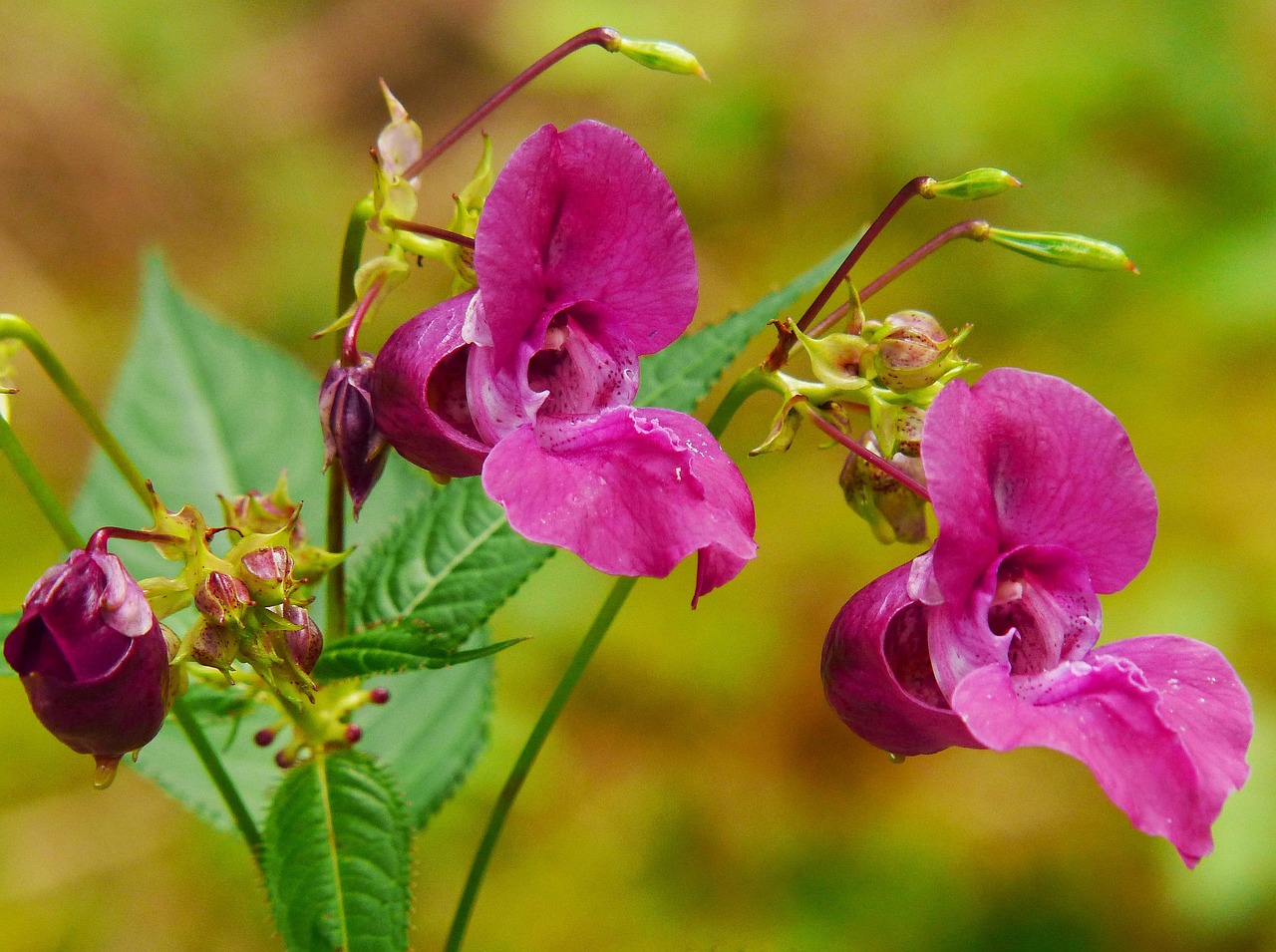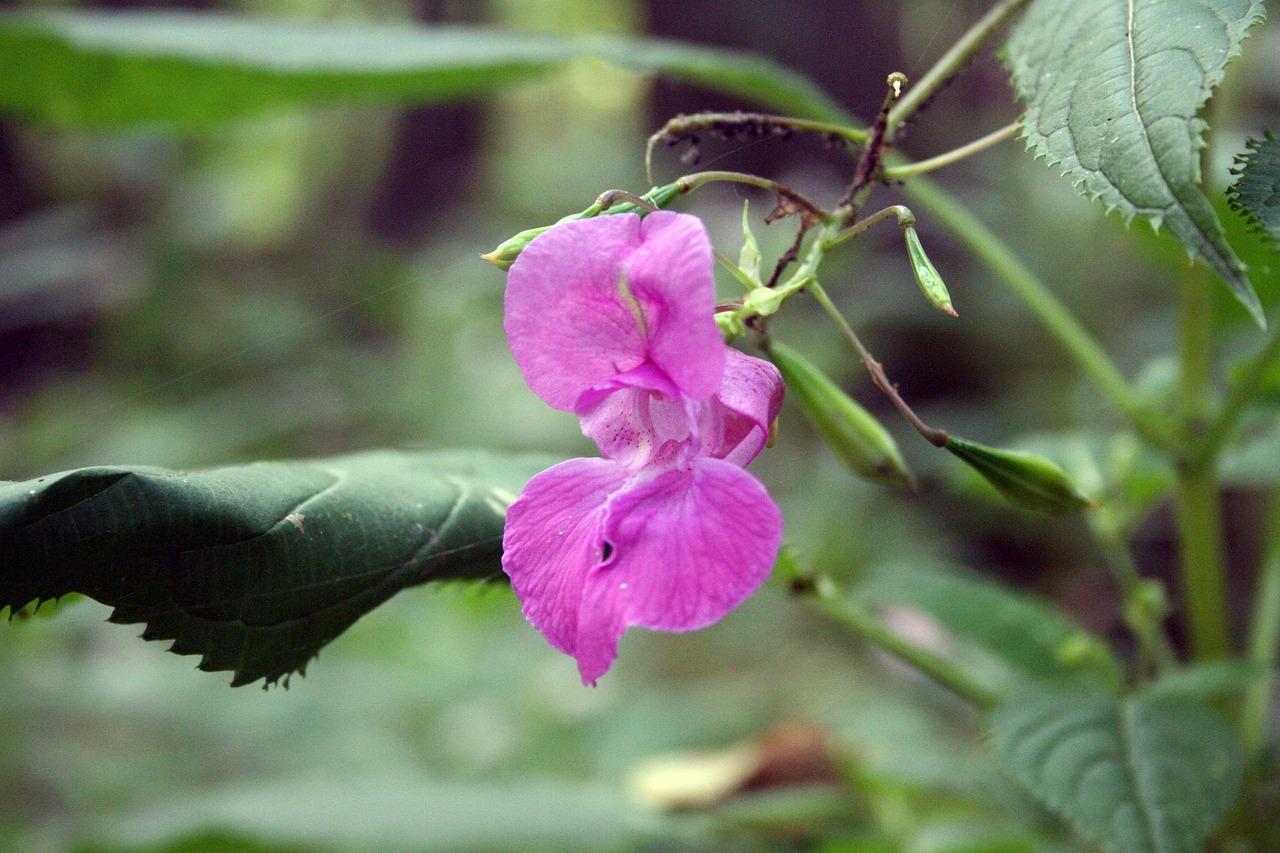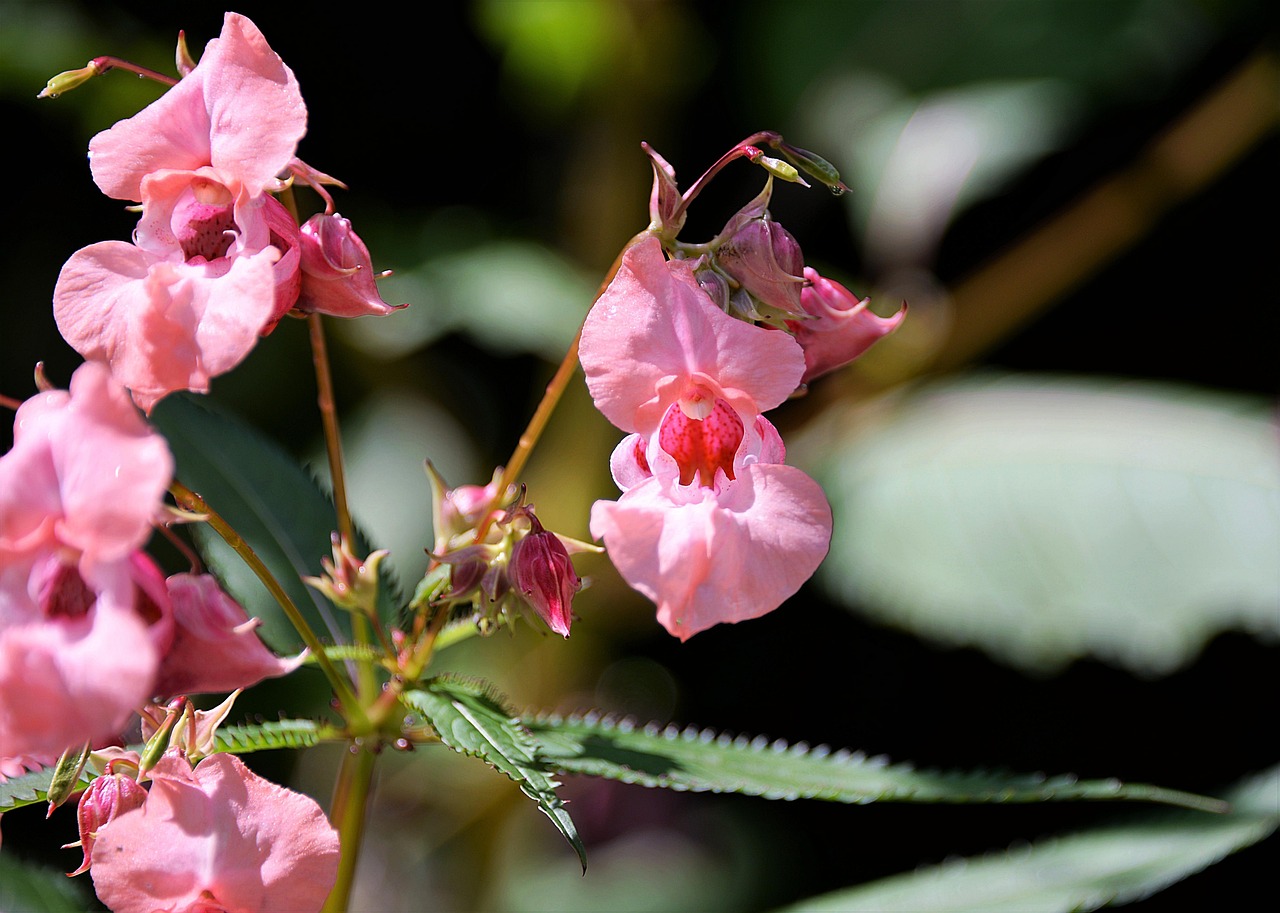Balsam fir trees are not completely deer resistant, but they are less likely to be eaten by deer compared to other species. Their strong scent and fine needles can deter deer, especially when food is scarce.
Understanding Balsam Fir Trees

Balsam fir, scientifically known as Abies balsamea, is a popular evergreen tree native to North America. It thrives in cold, moist environments and is commonly found in the northeastern United States and Canada. The tree is well-known for its aromatic foliage and distinctive conical shape, making it a favorite for ornamental landscaping and holiday decorations.
This tree typically grows to a height of 40 to 60 feet and has a diameter of 1 to 2 feet. Its dark green needles are flat and soft, with a pleasant fragrance that many people find appealing. Beyond their aesthetic appeal, balsam fir trees also play an important role in local ecosystems, providing habitat and food for various wildlife species.
Characteristics of Balsam Fir Trees
Balsam fir trees possess several notable characteristics that contribute to their popularity. Some of these features include:
- Growth Rate: Balsam fir trees exhibit a moderate growth rate, typically adding around 12 to 24 inches per year.
- Longevity: These trees can live for over 100 years under optimal conditions.
- Needle Retention: Balsam firs are known for their excellent needle retention, keeping their vibrant foliage throughout the winter months.
- Aromatic Properties: The needles and bark release a sweet scent that many find appealing, often used in holiday wreaths and decorations.
Environmental Adaptations
Balsam fir trees are well-adapted to harsh climates. They thrive in acidic, well-drained soils and prefer cooler temperatures. Their ability to tolerate shade allows them to grow under the canopy of larger trees. However, they are sensitive to drought and pollution, which can negatively affect their growth and health.
In addition to their environmental preferences, balsam firs have developed a variety of adaptations that help them survive in their natural habitats:
- Needle Structure: The flat needles reduce water loss and allow the tree to retain moisture during dry periods.
- Conical Shape: The tree’s shape helps shed snow accumulation, preventing branch breakage during heavy snowfall.
- Resin Production: Balsam firs produce resin that can protect them from pests and disease.
Deer Behavior and Feeding Preferences
Understanding deer behavior is crucial when considering whether balsam fir trees are suitable for your landscape. Deer are known to eat a wide range of plant materials, but their preferences vary based on availability and environmental factors. During times of food scarcity, deer may consume plants they would typically avoid.
Generally, deer tend to prefer tender shoots, leaves, and fruits. In contrast, they may avoid plants with strong scents or those that are tough or fibrous. Balsam fir trees, with their aromatic needles and dense foliage, may fall into the category of plants that deer generally avoid. However, this does not mean they are entirely deer-proof.
Factors Influencing Deer Feeding Behavior
The likelihood of deer eating balsam fir trees can depend on several factors:
- Season: During late winter and early spring, deer may resort to eating less preferred plants due to a lack of available food.
- Population Density: Areas with high deer populations may see increased feeding on various plants, including balsam firs.
- Habitat Changes: Changes in the environment, such as deforestation or development, can push deer into new areas where they may explore different food sources.
In summary, while balsam fir trees tend to be less appealing to deer due to their scent and needle structure, they are not immune to being eaten under certain conditions. Understanding both the characteristics of balsam firs and the behavior of deer will help homeowners make informed decisions when planting these trees in areas with deer activity.
Planting Balsam Fir Trees
When considering planting balsam fir trees, it is essential to choose the right location and conditions to ensure their health and longevity. Proper planting techniques can significantly affect the tree’s growth and resilience against deer and other potential threats.
Choosing the Right Location
Balsam fir trees thrive in specific environmental conditions. Selecting the ideal location is crucial for their success. Here are important factors to consider:
- Soil Type: Balsam firs prefer acidic, well-drained soils. Sandy loam or clay loam is ideal. Conduct a soil test to determine pH levels and amend the soil if necessary.
- Sunlight: These trees grow best in full sun to partial shade. A location that receives at least 6 hours of sunlight daily will promote healthy growth.
- Moisture: Balsam firs enjoy moist environments. Ensure the planting site has adequate drainage to prevent waterlogged roots.
- Protection from Wind: Windy areas can cause damage to young balsam firs. Consider plantings near other trees or structures to provide shelter.
Planting Techniques
Proper planting techniques are vital for establishing healthy balsam fir trees. Follow these steps for successful planting:
- Select Healthy Seedlings: Choose vigorous seedlings from a reputable nursery. Look for trees with healthy foliage and a well-developed root system.
- Timing: The best time to plant balsam firs is in early spring or fall when temperatures are moderate, allowing for better root establishment.
- Digging the Hole: Dig a hole that is twice as wide as the root ball but no deeper than the root system itself. This encourages lateral root growth.
- Positioning the Tree: Place the tree in the center of the hole, ensuring that the top of the root ball is level with the surrounding soil surface.
- Backfill and Water: Fill in the hole with soil, gently packing it down. Water thoroughly to eliminate air pockets and promote root contact with the soil.
- Add Mulch: Apply a layer of organic mulch around the base of the tree. This helps retain moisture, suppress weeds, and regulate soil temperature.
Maintaining Balsam Fir Trees
After planting, ongoing care is essential for the health of balsam fir trees. Proper maintenance can help them withstand deer browsing and other environmental stressors.
Watering and Fertilization
Watering and fertilization practices are important for establishing strong balsam fir trees.
- Watering: Newly planted balsam firs need consistent moisture. Water regularly, especially during dry spells. Aim for 1 inch of water per week, either from rainfall or irrigation.
- Fertilization: Fertilize in early spring with a balanced, slow-release fertilizer designed for evergreens. Follow package instructions for dosage based on the tree’s age and size.
Pest and Disease Management
Balsam fir trees can be susceptible to various pests and diseases. Regular monitoring is essential for early detection:
- Pests: Common pests include aphids, spider mites, and bark beetles. Use insecticidal soap or neem oil to manage infestations.
- Diseases: Watch for signs of needle blight, root rot, or cankers. Ensure proper spacing between trees for air circulation and avoid overwatering to prevent disease development.
Deer Deterrent Strategies
If deer are a concern in your area, implementing deterrent strategies can help protect your balsam fir trees. Here are some effective methods:
- Physical Barriers: Fencing is one of the most effective ways to keep deer away from your trees. Use a fence at least 8 feet tall to prevent deer access.
- Coyote Urine or Repellents: Commercial deer repellents or natural deterrents such as coyote urine can be sprayed around the base of the trees to discourage deer browsing.
- Companion Planting: Planting deer-resistant plants around balsam firs can help create a barrier. Consider using herbs like lavender or rosemary, which deer tend to avoid.
By following these planting, maintenance, and deterrent strategies, homeowners can increase their chances of successfully growing balsam fir trees while minimizing deer-related damage.

Benefits of Balsam Fir Trees
Balsam fir trees offer numerous benefits beyond their aesthetic appeal. Understanding these advantages can help homeowners appreciate their value in landscaping and the environment. Here are some key benefits of planting balsam fir trees:
Environmental Benefits
Balsam firs play an important role in the ecosystem. Their contributions include:
- Air Quality Improvement: Like all trees, balsam firs absorb carbon dioxide and release oxygen, improving air quality.
- Wildlife Habitat: These trees provide shelter and food for various wildlife species, including birds and small mammals.
- Soil Erosion Control: The extensive root system of balsam firs helps stabilize soil, reducing erosion and promoting healthy ecosystems.
- Water Regulation: Balsam firs can help manage water flow in their environment, reducing runoff and promoting groundwater recharge.
Aesthetic Appeal
The visual appeal of balsam fir trees makes them popular choices for landscaping. Key aesthetic benefits include:
- Year-Round Color: Balsam firs maintain their vibrant green color throughout the year, offering a beautiful backdrop in any garden or landscape.
- Conical Shape: Their natural conical shape provides a classic look, suitable for formal gardens or informal landscapes.
- Fragrance: The pleasant scent of balsam fir needles enhances the ambiance of outdoor spaces, making them enjoyable for gatherings and relaxation.
Cultural Significance
Balsam fir trees hold cultural significance in various contexts. They are often associated with holiday traditions and have historical importance in many regions.
Holiday Traditions
Balsam firs are commonly used as Christmas trees in many households. Their strong branching structure allows for easy decoration, and their pleasant aroma is synonymous with the holiday season. Families often enjoy the tradition of selecting and decorating a balsam fir, creating memories that last a lifetime.
Historical Uses
Indigenous peoples and early settlers utilized balsam fir trees for various purposes:
- Medicinal Uses: The resin from balsam fir has been used for its antiseptic properties and as a remedy for respiratory ailments.
- Construction Material: The wood is lightweight yet durable, making it suitable for construction and crafting items like furniture and crafts.
- Traditional Practices: Balsam fir boughs were often used to make bedding, providing comfort and insulation during colder months.
Challenges of Growing Balsam Fir Trees
While balsam fir trees have many benefits, there are also challenges associated with growing them. Understanding these challenges can help homeowners better prepare for potential issues.
Pest Infestations
Balsam firs can be susceptible to various pests that may threaten their health. Common pests include:
- Aphids: These small insects can weaken the tree by feeding on sap, leading to stunted growth and leaf curling.
- Bark Beetles: Bark beetles can bore into the bark, causing significant damage and even tree death if not managed promptly.
- Spider Mites: These pests thrive in dry conditions and can cause needle discoloration and eventual needle drop.
Disease Risks
Balsam firs are also vulnerable to several diseases, which can affect their overall health:
- Needle Blight: Caused by fungal pathogens, needle blight results in the browning and dropping of needles, impacting the tree’s appearance.
- Root Rot: Overwatering or poor drainage can lead to root rot, which can be fatal if not addressed quickly.
- Cankers: Fungal infections can create cankers on the bark, leading to dieback in affected branches.
When to Consider Alternatives
Despite their many advantages, there may be circumstances where homeowners might consider alternative tree species. Factors influencing this decision include:
- Climate Compatibility: In areas with warmer climates, balsam firs may struggle to thrive. In such cases, consider native evergreen species that are better suited for warmer temperatures.
- Pest Pressure: If local deer populations are particularly high or if pests frequently attack balsam firs, alternative trees may provide a more resilient option.
- Aesthetic Preferences: Homeowners may prefer other tree species that better match their landscaping style or desired features.
By weighing these benefits and challenges, homeowners can make informed decisions about planting balsam fir trees in their landscapes while considering their specific circumstances and preferences.
Long-Term Care for Balsam Fir Trees

Once established, balsam fir trees require ongoing care to thrive. Regular maintenance practices can enhance their growth and ensure they remain healthy for years to come. Here are some important long-term care tips:
Seasonal Pruning
Pruning balsam fir trees is essential for promoting healthy growth and maintaining their shape. Seasonal pruning should focus on removing dead or damaged branches. It is best to perform this task in late winter or early spring before new growth begins.
- Remove Dead Branches: Inspect the tree regularly for any branches that are dead or diseased. Removing these helps prevent the spread of disease.
- Thin Crowded Areas: If branches are overcrowded, selectively thin them to improve air circulation and light penetration.
- Shape Maintenance: For aesthetic purposes, maintain the natural conical shape by trimming any wayward branches.
Monitoring for Signs of Stress
Regularly monitoring balsam fir trees for signs of stress is crucial. Look for:
- Needle Discoloration: Yellowing or browning needles may indicate nutrient deficiencies or environmental stress.
- Wilting: Wilting or drooping branches may suggest inadequate watering or root problems.
- Pest Infestation: Presence of insects or unusual webbing can indicate pest issues that require immediate attention.
Alternative Plant Choices for Deer-Prone Areas

If deer pressure is a significant concern, homeowners might explore alternative tree species that offer similar aesthetic qualities but are more resistant to deer browsing. Some options include:
- Eastern Red Cedar (Juniperus virginiana): This evergreen is highly deer-resistant and offers attractive foliage and berries.
- Norway Spruce (Picea abies): Known for its rapid growth and dense foliage, Norway spruce is often less appealing to deer.
- White Pine (Pinus strobus): This native species provides a tall, graceful growth habit and soft needles that deer tend to avoid.
Selecting these alternatives can help create a resilient landscape while minimizing the risk of deer damage. It’s important to research and choose species that suit the local climate and soil conditions.
Final Thoughts
Balsam fir trees provide numerous benefits for homeowners seeking to enhance their landscapes with attractive, evergreen trees. Their aesthetic appeal, environmental contributions, and cultural significance make them a valuable addition to any property. However, understanding their susceptibility to deer and other challenges is essential for successful cultivation.
By implementing effective planting techniques, maintaining proper care, and employing deer deterrent strategies, homeowners can create thriving environments for balsam fir trees. Additionally, being aware of potential alternatives allows for informed decisions that cater to specific landscape needs and preferences.
Ultimately, whether opting for balsam firs or exploring other tree species, homeowners can enjoy the beauty and benefits of trees while creating a sustainable and resilient landscape for years to come.
